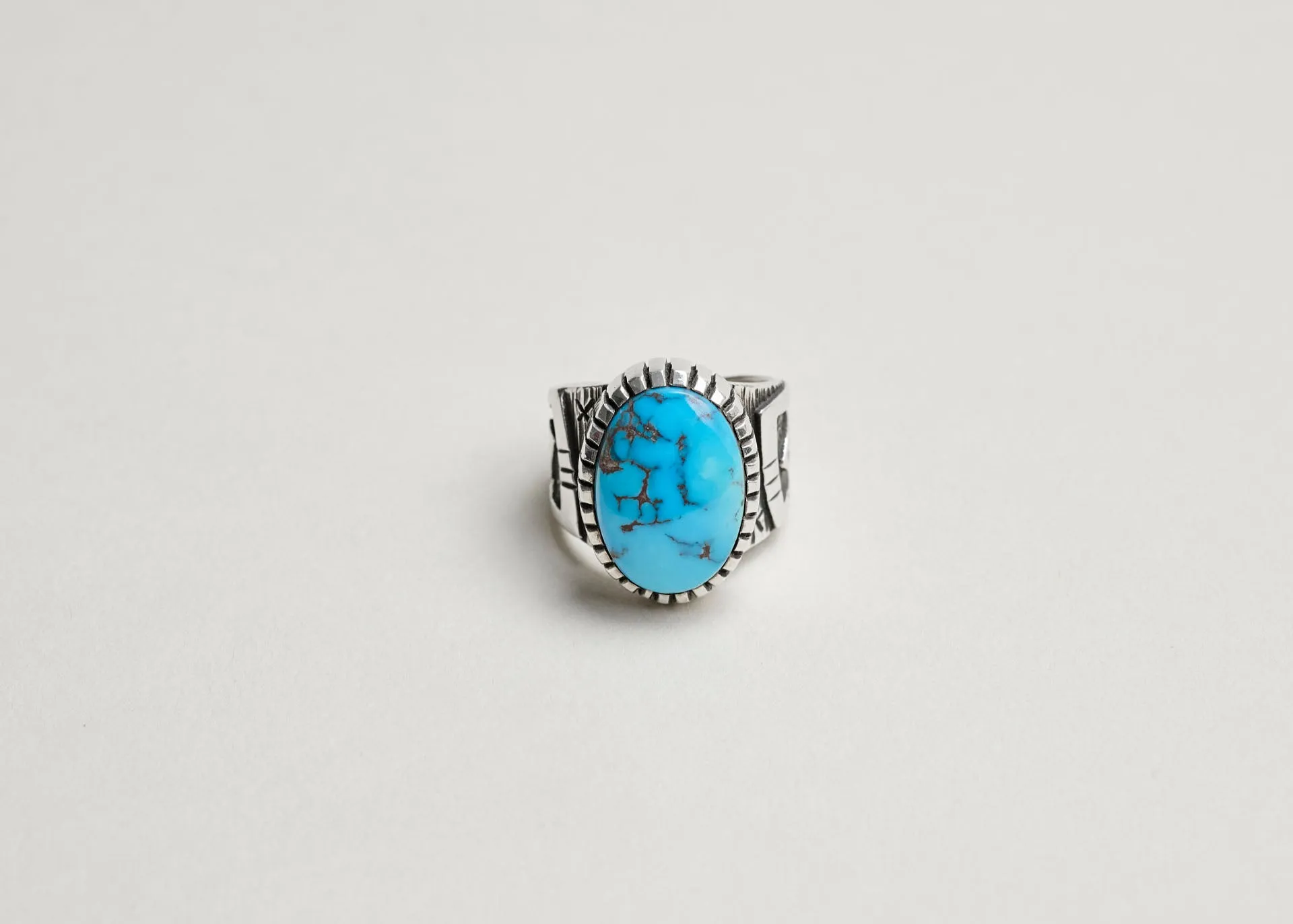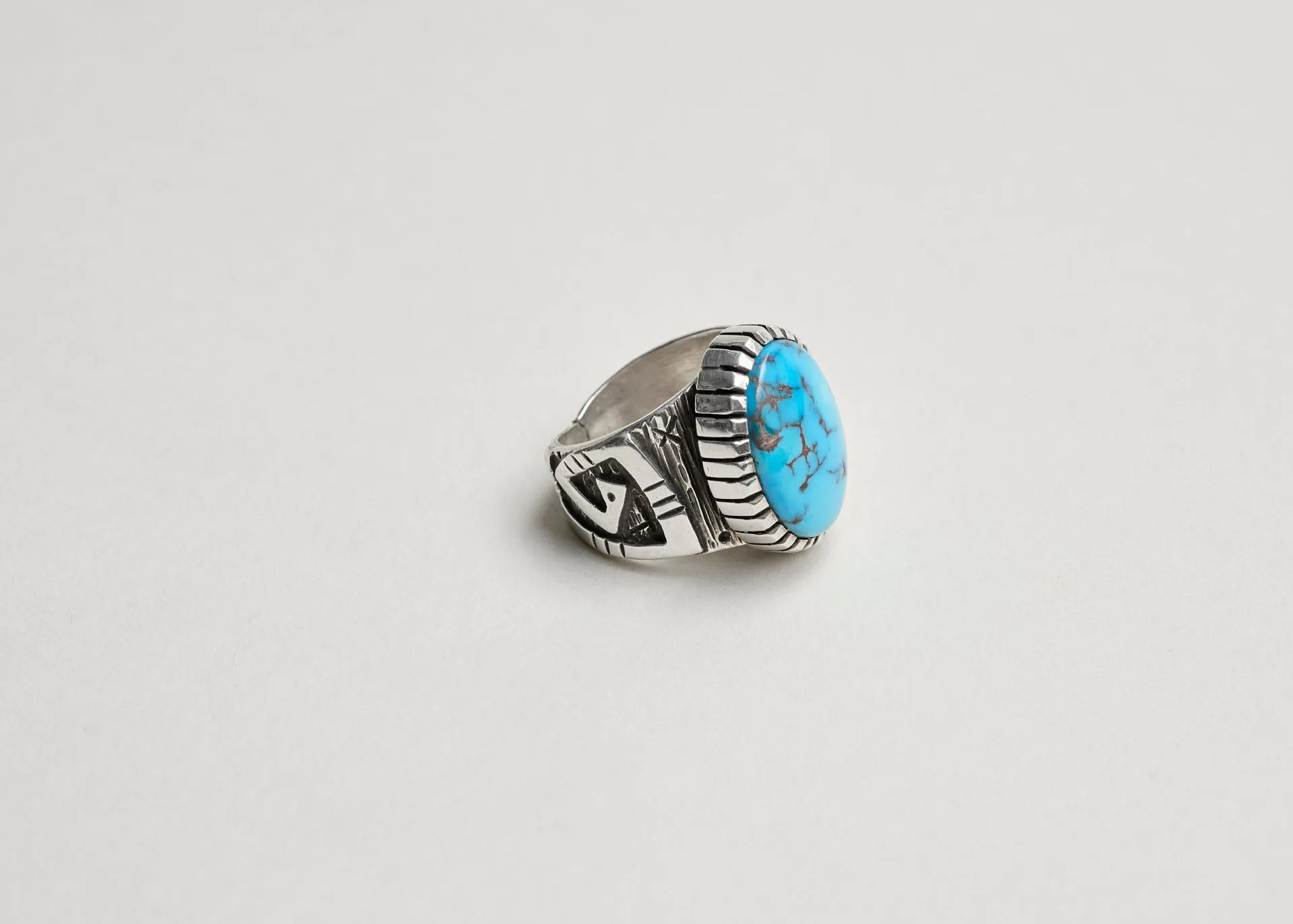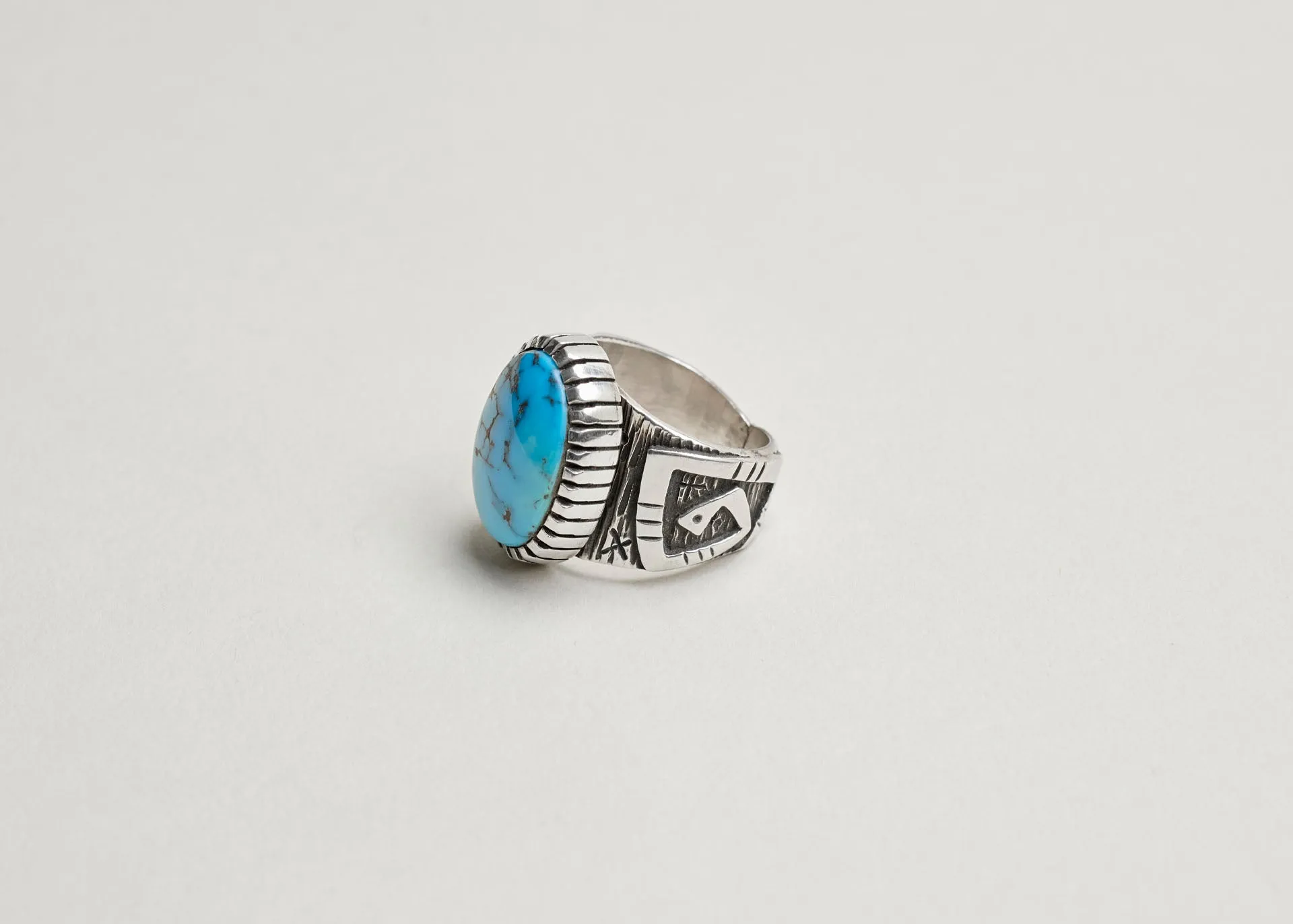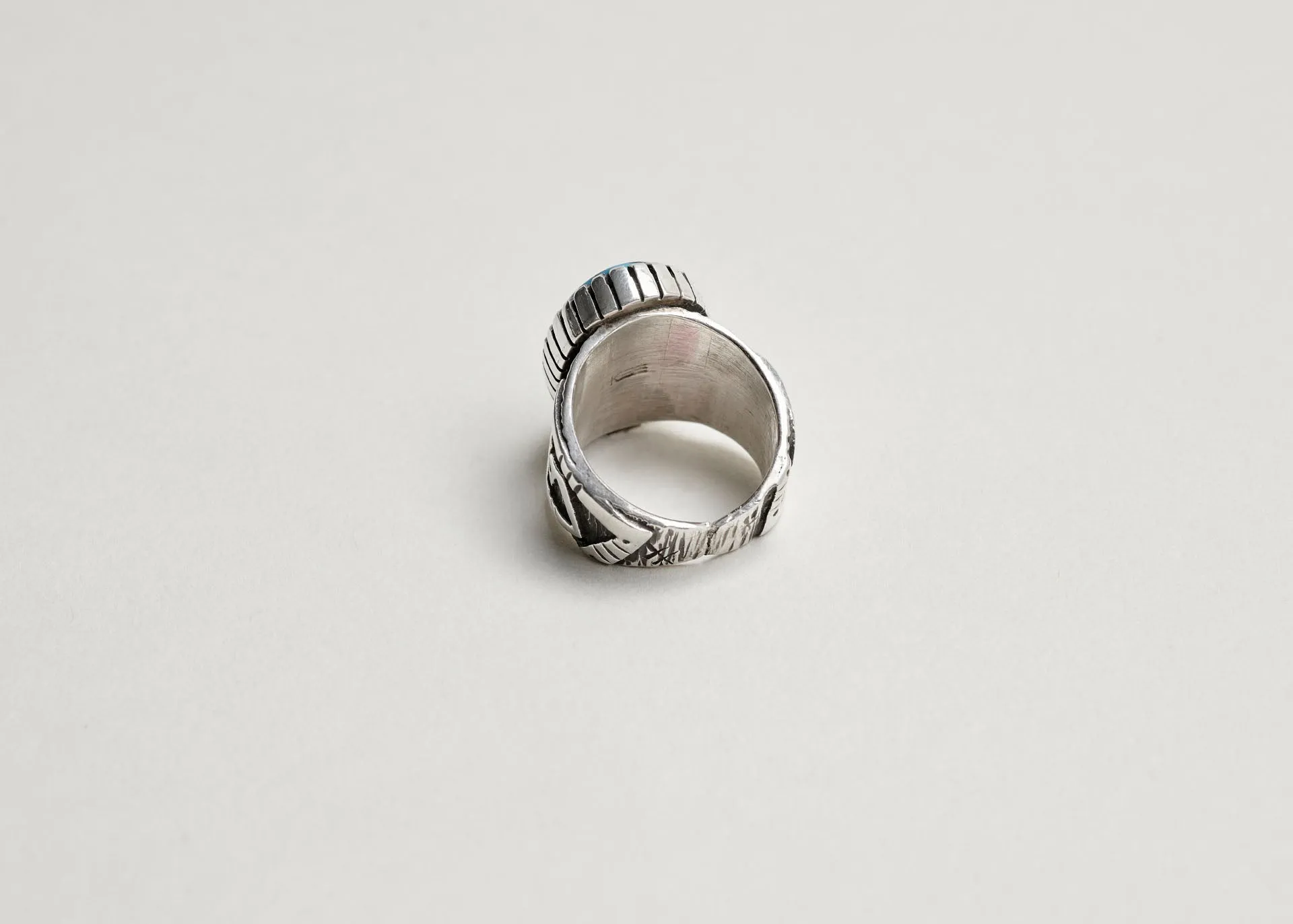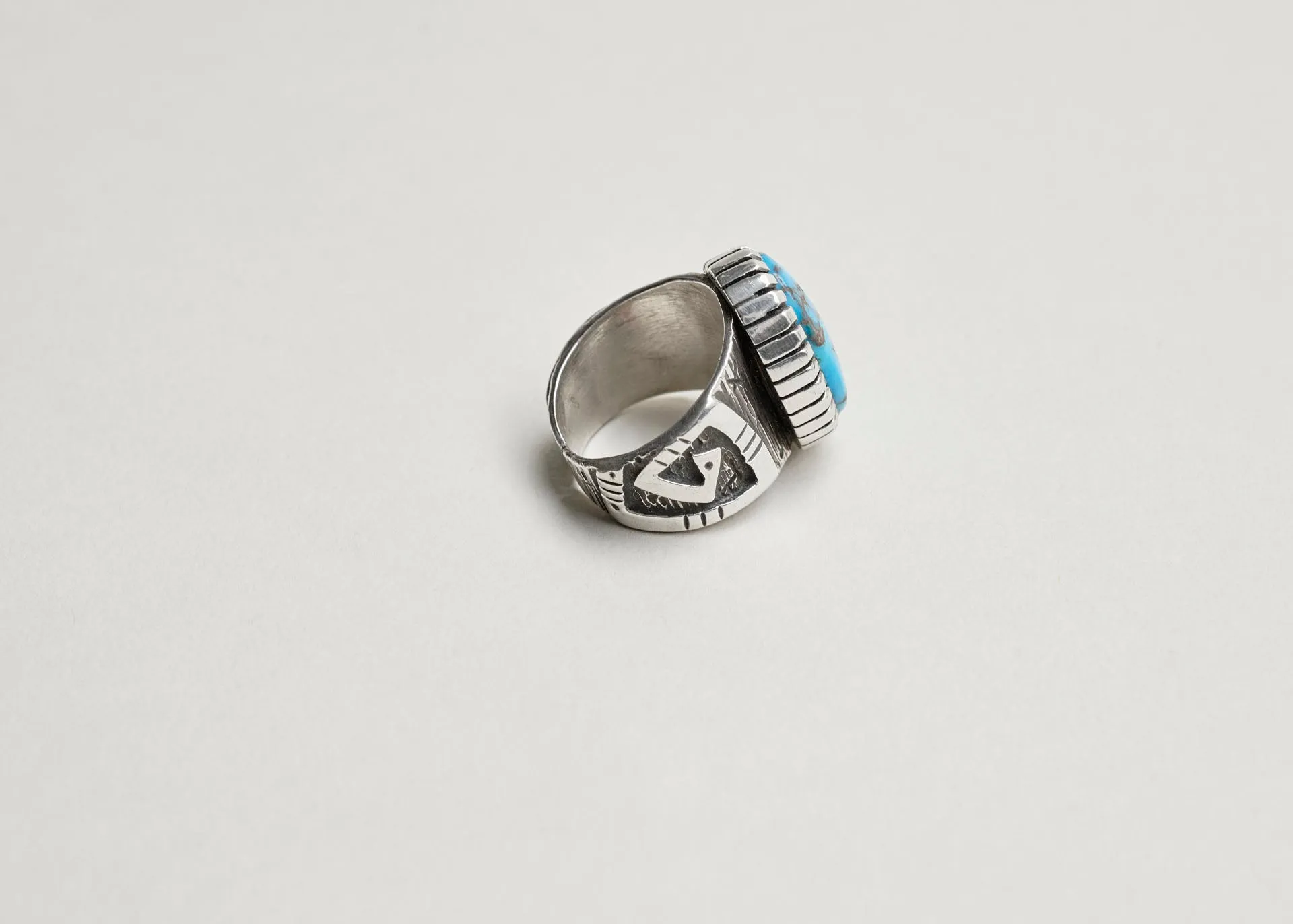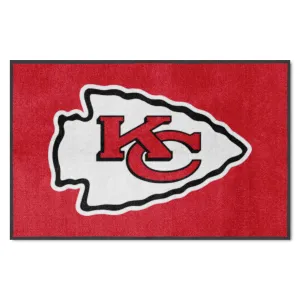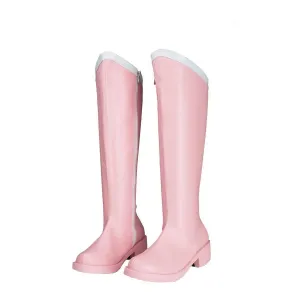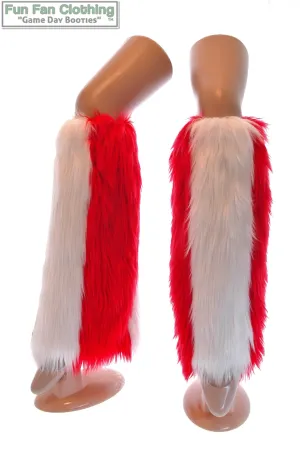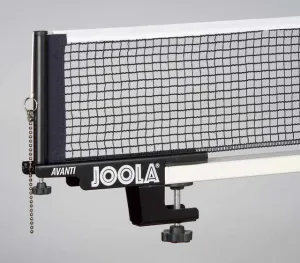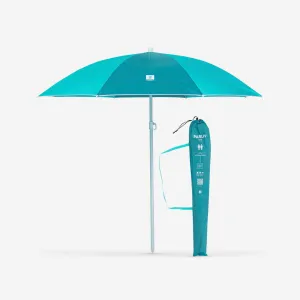A natural cabochon turquoise silver ring set onto a snake ring. This ring has a great presence on the finger and is dictated by the beauty of the large and polished turquoise center stone. Such a center stone often leads the artist to not add excessive detail to the mount. However, the artist has chased a serpent on both sides of the gorgeous blue center stone. The stone is so eye catching and vibrant with beautiful veining running though it. The rub set mount also has beautiful ribbing detail running around the edge.
For the Native American culture, Turquoise signified water and sky, for bountiful harvests, health and protection turquoise and was also used to visually showcase their individuality, rank and history. The Pueblo tribes of the Southwest revere snakes, as they are in many parts of Mexico. Kingsnakes are also considered sacred in some California Native cultures.
The turquoise stone set into the ring is thought to be ‘Bisbee' turquoise. This stone comes from the Lavender Pit copper mine that is now closed. Bisbee turquoise is famous for its deep blue color and smoky black matrix, of which this is a fine example.
The ring is marked on the inside of the shank with "KEE". This is for Navajo artist Kee Yazzie. Just to the north of Ganado, Arizona, Kee Yazzie’s home, lie spectacular canyons, some open to tourists like Canyon de Chelly, others hidden and inaccessible. Deep in the labyrinths, on cliff walls and in caves, are the etched drawings of Kee’s ancestors.
Kee has translated these ancient petroglyphs into contemporary bracelets. His overlay work in sterling silver and gold recreates the stone-pecked pictures - transforming rock art to wearable art. With hundreds of small, precise cuts of a jewelry saw, his miniature reproductions of the petroglyphs give the illusion of a mosaic of metal. Kee’s background in architectural design has undoubtedly enhanced his natural gift for balance. He also mentions the creative influence of artists Ray Scott, Gibson Nez, and Norbert Peshlakai.
“When I returned from school in 1992, I had the desire to learn metalsmithing and, by luck, my friend Ray Scott offered me a job.” Soon, Kee was creating his own designs. At his first show, Eight Northern Pueblo in 1995, Kee’s thunder bracelet took second place.
Kee is now recognized as one of the most accomplished overlay craftsmen, sometimes incorporating one hundred symbols within a bracelet. Each intricately hand-cut piece becomes part of a seemingly never-ending mural in silver.
“Mostly, I try to create something that people will like to wear.”
The ring is a size 8. This ring can be sized if required.

